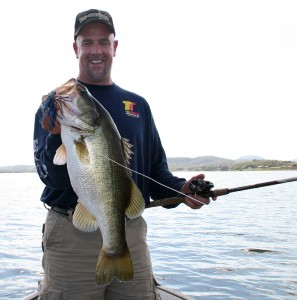This is part 1 of a 2-part series on fishing with jigs. Part 1 covers jig theory and construction, part 2 covers recommended jig fishing techniques.
Jigs: They’re as old as the hills. In fact, they may very well be the oldest artificial lure known to man. And yet, they still catch fish, lots of them as a matter of fact. No one really knows why they’re so effective.
Some anglers believe they resemble crayfish and that’s the reason for their success. That makes sense; just about every game fish on the planet will eat a crayfish. Others think they just look like something good to eat. Nothing in particular mind you, just something good.
If the truth be told the real key to their success is probably not so much what they may or may not imitate but rather their versatility. You can drag them along the bottom, swim them at almost any depth or hop them around cover for success on any given day with almost any given species of fish.
Even better they come in an endless array of designs and styles. Head configurations alone would fill a book. And then there are the dressings. Darn near everything on the planet has been used at one time or another by someone, somewhere, for some reason.
And yet, with all that said, they’re all about the same. They have a lead head, a hook and some sort of dressing or skirt that flows, floats or undulates in the water. The basic design characteristics of jigs haven’t changed much for more than a century.
Jig Construction
That is they were all about the same. Jigs have changed with the introduction of tungsten. One of the primary advantages of tungsten is weight. It’s much heavier than lead and therefore generates the same weight with less bulk, a lot less.
With a smaller profile the jig will drop faster given the same head weight. This gets the bait down, into the strike zone quicker and more efficiently. Under some conditions this matters. After all, trying to fish a one-sixteenth ounce jig at 10 feet can be challenging even for the most experienced angler.
If the jig weight can be increased without a corresponding increase in head size and lure profile fishing with a smal jig fishing becomes less of a challenge. You have the benefits of more weight with less bulk. Replacing lead with tungsten does this.
Tungsten is also more sensitive than lead. That’s because it‘s harder, more dense. This increased sensitivity not only allows you to feel a bite more quickly but also gives you a better feel of the bottom contour and composition.
Increased density also generates more noise under the water. When tungsten strikes a rock or limb it makes a louder, more distinct thump than lead. The fish can hear and locate the jig more efficiently and from further away. This matters, especially if you’re fishing deep —low light penetration — or in turbid, muddy water.
Yet another advantage of these jigs is their environmental impact, or lack of one to be more specific. It’s no secret that there are long term concerns about lead and its use in our environment. Some states have restricted its use. Others may ban it completely. (Don’t be fooled by the recent victory of the fishing industry over the anti-lead forces. The battle continues. The ultimate winner is yet to be determined.)
